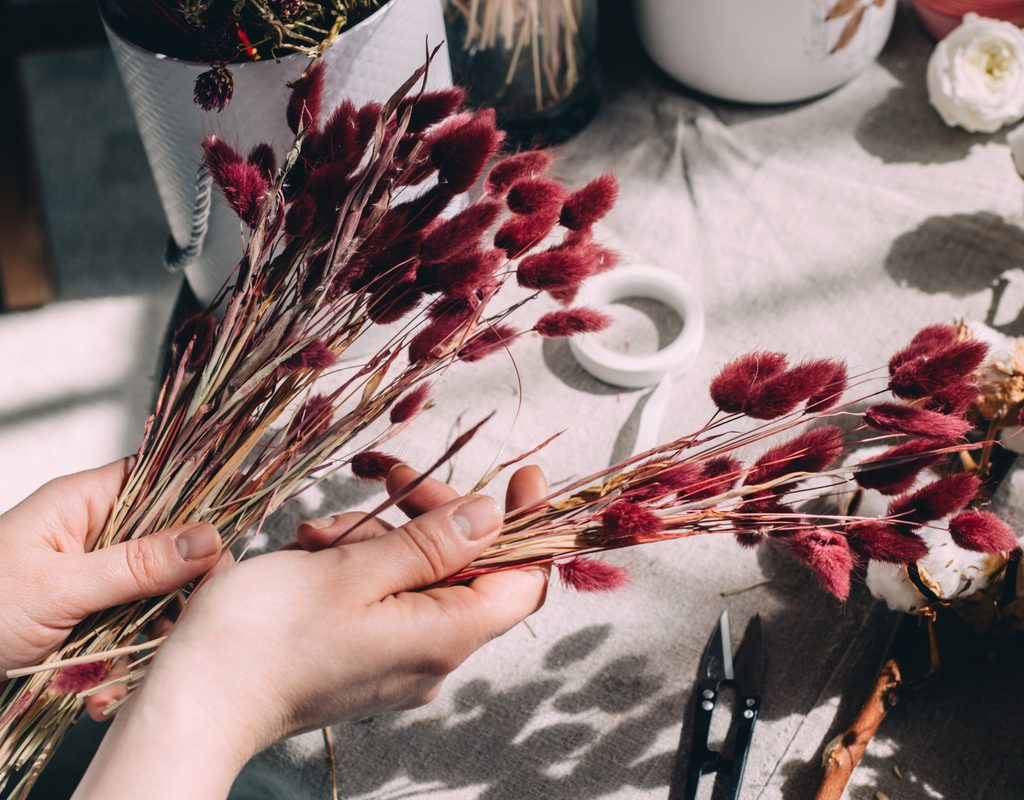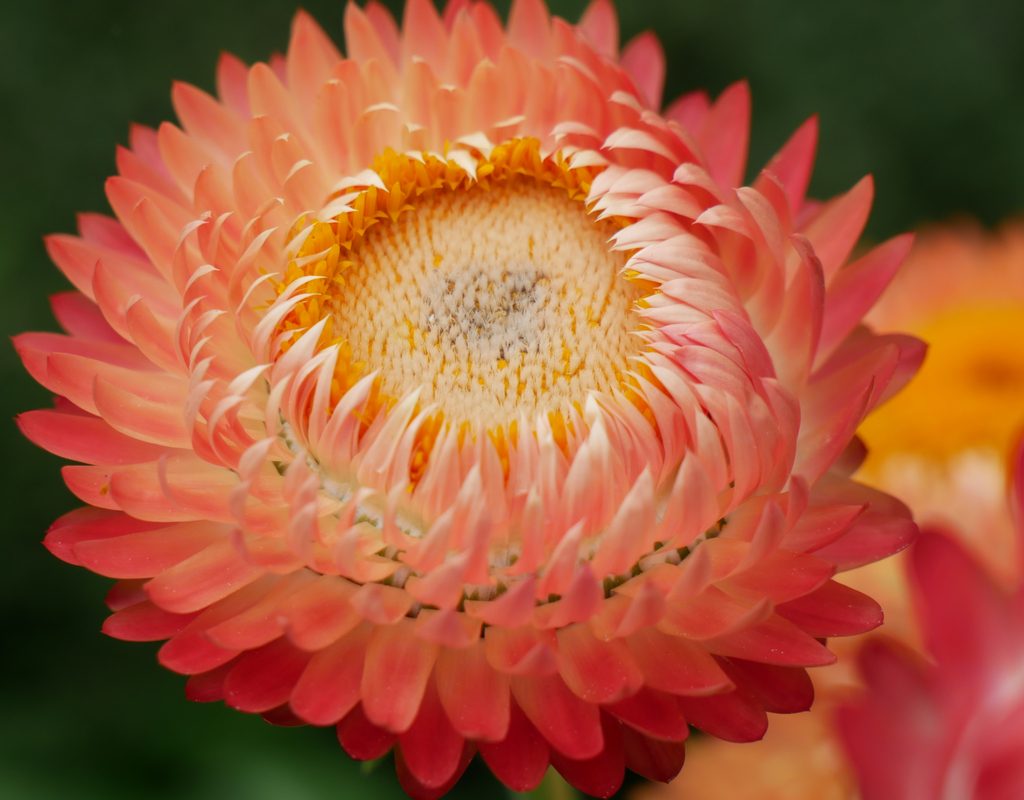Flower arrangements are a beautiful way to spruce up your indoor space when you want a bit of color alongside your houseplant. Unfortunately, fresh flowers don’t last too long and often keep up their appearance for a week or two with proper care before they need to be tossed in a compost pile. That’s where everlasting flowers come in. Taken from plants in your garden, the cuttings of everlasting flowers can be dried and kept in an arrangement for up to a year before they start to fade. So why not take a shot at growing some?
What are everlasting flowers?
Everlasting flowers can maintain their color and appearance for a long time after being cut and dried out, especially through the winter months. At a time when store-bought flowers don’t look great and nothing green is growing outside, you’ll be able to enjoy arrangements made from everlasting flowers cut straight from your garden—color and all.
Plus, using everlasting flowers in place of live flowers for arrangements can help keep costs down and give your home a natural feel for a longer period of time. It can be quite rewarding to cut them, dry them out, and get to enjoy them for more than a week or two. Best of all, everlasting flowers are a good way of preserving your summer garden throughout the cold months and keep you looking forward to spring.
Benefits of having them in your garden
Everlasting flowers are about as beautiful as other ones that you’d grow and enjoy during the season, so there’s little to no concern of them throwing off the balance of your outdoor flower garden. They can be grown in containers, too, if you want to enjoy them on a balcony or deck. Some of the main benefits of growing everlasting flowers include:
- Enjoying the cut and dried blooms through the winter
- Providing you with long-term arrangements
- Minimizing concern of pests or disease from fresh cuttings
- Being used in essential oils and remedies to help the body

How to start growing everlasting flowers
Everlasting flowers aren’t any more difficult to grow than other kinds of flowers—you just have to plan ahead. Start looking during the winter to pick out varieties you want both in your garden and in dried flower arrangements. Once spring rolls around, you’ll know exactly which plants you want to pick out at the nursery. How well they grow, like most plants, will depend on whether you care for them well and provide them with an environment where they’ll thrive.
If you’d rather grow from seed than try your luck at a local nursery, you can always purchase seeds for everlasting flower varieties online and start them indoors as you would many other flowers and vegetables. There are heirloom varieties you can find that grow well from seed; you may just have to dig around a bit.
How to dry them out for arrangements
Drying out everlasting flowers can vary depending on the variety. There are a few different methods for preservation: air drying, pressing, and desiccant drying.
Air drying is the easiest and most common method for preserving everlasting flowers. Most varieties can be air dried. To do this method effectively, you’ll want to harvest flowers that are newly-opened (instead of older) in the morning hours. After you’ve harvested them, you’ll want to cut the leaves off, secure the stems in a bundle with a rubber band, and hang them upside down in a cool, dry place that has good ventilation and circulation. Drying will take around a couple weeks.
Pressing is best done on relatively flat everlasting flowers and grasses. Think cosmos, daisies, pansies, and violets, along with others that have a similar appearance. (Blooms like roses, for example, aren’t flat enough to properly press.) There are places that sell flower presses specifically for this type of preservation, but you can also substitute a DIY press using a heavy book and sheets of absorbent paper (like parchment). If you use this method, you should sandwich the flowers between two sheets of paper, then place the paper on a page around the middle of the book. Close the book and leave the flowers alone for a couple weeks.
Desiccant drying involves using something like silica gel that you can get online. This method works for some everlasting flowers but can also be used on non-everlasting blooms that still maintain their appearance when quick-dried. For this method, fill a plastic container (with a lid!) with about an inch of the desiccant. Place the flowers in a single layer on top of the layer, then gently cover with more of the desiccant. Cover with the lid and let the flowers sit untouched for a week.

Some everlasting flowers to help get you started
There are tons of everlasting flower varieties out there, and you may not even know you’re growing some! A quick search will show that there’s something for every kind of garden no matter the color palette, and it helps that some grasses are also everlasting when dried.
Bunny tail grass
Bunny tail grass, when dried, can last up to a year in arrangements. For this specific everlasting flower, you should start by cutting the stems near the base when loose pollen starts appearing on the flowers. Take your cuttings, tie them in a bundle (with the cut parts all at the same end) with garden twine or cotton string, and hang in a cool, dry place for two to three weeks.
Light needs: Full sun to partial shade, moderate to bright light
Water needs: Water deeply, let soil dry out between waterings
Soil needs: Well-draining
Globe amaranth
Globe amaranth flowers are a popular choice and have been used in dried arrangements for years. Similar to the bunny tail grass, you can dry these flowers by tying and hanging them in a cool, dry place. Once they’re dried, you can use them with the stems still attached or cut the stems off and use the flowers for other things like crafts.
Light needs: Full sun, bright light
Water needs: Water at the base of the plant or in the morning to prevent powdery mildew
Soil needs: Grows well in most soil except high-alkaline
Strawflowers
Strawflowers are another everlasting variety that’s air-dried by bundling and hanging upside down (living up to the most common drying method). For this flower, you can even choose to dry only the flower heads or remove the stems post-drying and recreate a stem or arrangement using floral wire.
Light needs: Bright light, heat tolerant
Water needs: Water only when slightly dry
Soil needs: Well-draining, non-soggy soil
Everlasting flowers are a game changer for indoor floral arrangements. They may not smell exactly the same as fresh flowers, but they’ll brighten up your space and let you continue enjoying all the hard work you put in throughout the growing season when you’re kicking back and enjoying a cup of hot cocoa by the fire.


